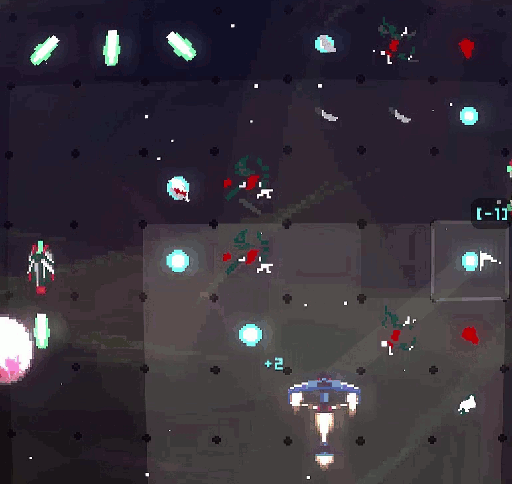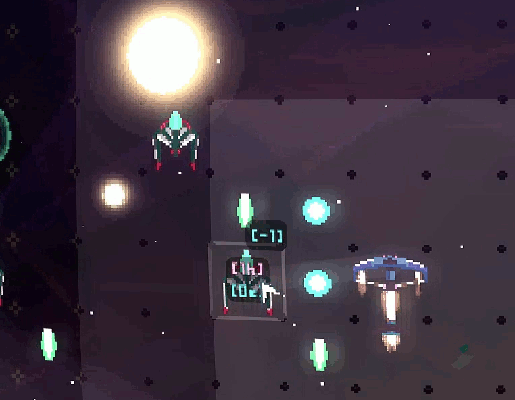Movement is crucial in shmups. Planning the steps to be taken according to the position of enemies and their shots is one of the most important and difficult things to master this kind of game. As shmups happen in real time, the difficulty comes from managing all the information regarding shots and their movement patterns.
Next Jump is a reinterpretation of the shmup genre. As such, its movement mechanics had to be very carefully thought and tested. Because it is a turn-based game, rather than a classical real time shmup, the players have plenty of time to observe and decide their next move. Therefore, if the movement mechanics doesn’t work, nothing else does.
Thousands of things went through my head during the development of the game – almost all of them demanded a superhuman programming ability which I don’t have. For that reason, I did what I always do in these cases: I turned my eyes to the classics.
In this case, Checkers (or english draughts) and Chess.
Checkers is an interesting case study because it’s a game where movement and attack are combined in the same action. Better than this: you can form “combos” using these “attacks” (best known as “multiple jumps”). Such simplicity inspired the main mechanics of movement and action of the game:

In NEXT JUMP the ship has some attributes, among them the Batteries, which are the ship’s energy reserve. This means that each action the player does will cost energy, in a similar way to the classic “action points” of turn-based games. Thus, both movement and attacks cost energy, and when the energy reserve ends, the player’s turn also ends. But that’s not where the inspiration from Checkers came from.
In the above GIF, we can see that an enemy, when destroyed, releases two things: Scrap (“money”, the rotating space dust) and Energy (the blue ball). By picking up these “energy balls”, the ship recovers at least part of its energy reserve, enabling movement combos. Now add to this equation the following: The number of turns that the Ship has inside a “jump” is limited to three. This makes each move very valuable, specially in a game where “score” and “scrap” are so central to the gameplay loop.

Okay, the basic movement mechanic is this. But there was something else missing: an “incentive” to make the player think about movement during the attacks. That is where I introduced the concept of “recoil”:
Most weapons, including the basic ones of each ship, have a “forward recoil” or a “backward recoil”. This means that every attack is ALSO a movement. To illustrate, as seen in the GIF above, when the Balista shoots, it also moves backwards. These two mechanics, added to the procedural “Shmup Boards” generator, makes the movement itself a series of interesting decisions. In addition, they also guide the rest of the design, such as different enemies (and their movement / attack patterns), Ship types (there are four) and the environments of the Boards (Solar Wind, Nebula, Meteors… to name a few).
I hope you have enjoyed this approach of design. In the future I will talk about the board generation and combat mechanics. I would also be glad to answer any questions you may have.
Thank you!


